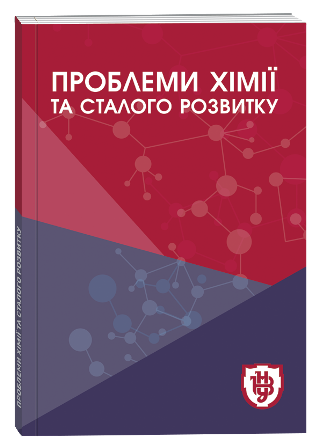TOXICOLOGICAL RISKS OF FOREST RESTORATION ON TERRITORIES WITH AMMUNITION CONTAMINATION
DOI:
https://doi.org/10.32782/pcsd-2025-3-11Keywords:
forest ecosystems, ammunition contamination, phytotoxicity, heavy metals, forest restorationAbstract
This review study of toxicological risks of forest restoration on territories with ammunition contamination systematizes current scientific knowledge about complex interactions between military contaminants and forest ecosystems in the context of the Russian-Ukrainian war and international experience. Over 160 publications on explosive compound toxicology, heavy metal accumulation, and ecological barriers to forest recovery after military actions were analyzed. Phytotoxic effects of major explosive compounds were systematized: trinitrotoluene (TNT) demonstrates highest phytotoxicity with LC50 for Scots pine seedlings of 45 mg/l and causes plant tissue degradation of 26.8%, while hexogen (RDX) and octogen (HMX) are characterized by viability reduction of 20.4% and 18.4% respectively with higher persistence in soil environment. Data on heavy metal accumulation from military activities were generalized, showing critical lead concentrations up to 1067 mg/kg in soils and 1495 μg/l in groundwater, which is 53 times higher than background values and creates long-term geochemical barriers for forest regeneration over decades. Specific ecological obstacles to forest recovery after the Russian-Ukrainian war were examined, including 38,589 hectares of damaged forest cover in three regions during 2022, contamination with unexploded ordnance, cascade disruptions of nitrogen and phosphorus biogeochemical cycles, degradation of mycorrhizal symbioses, and structural vulnerability of monoculture plantations.International bioremediation experience was systematized, including field trials of genetically modified switchgrass for hexogen degradation (remediation rate 27 kg/ha over three years) and post-conflict studies in Colombia after the 2016 FARC peace agreement, which revealed paradoxical increase in deforestation rate by 177% after cessation of military actions. A conceptual classification of military contaminants by phytotoxicity and persistence, matrix model for risk assessment for different types of forest biogeocenoses, and hierarchical scheme of ecological barriers to forest succession were developed. A comprehensive algorithm for assessing biosafety of forest restoration measures based on risk analysis criteria was presented, including six sequential stages from contaminant identification to technical recommendations formation for remediation measures. Review results demonstrate critical necessity of integrating toxicological analysis with modern remediation technologies and developing interdisciplinary approaches in military ecology for effective restoration of militarily disturbed forest landscapes in the post-war period.
References
Barker A. J., Douglas T. A., Jacobson A. D., McCarter M. K., Barbato R. A., Thoms A. V., Walsh M. E. Environmental impact of metals resulting from military training activities: A review. Chemosphere. 2021. Vol. 265. Article 129059. DOI: https://doi.org/10.1016/j.chemosphere.2020.129059
Bilous A., Matsala M., See L., Danylo O., Bilous S., Kovalevskyi S., Lesiv M. Forest management practices in post-conflict landscapes: A European perspective. Forest Policy and Economics. 2023. Vol. 148. Article 102891. DOI: https://doi.org/10.1016/j.forpol.2023.102891
Broomandi P., Guney M., Kim J. R., Karaca F. Soil contamination in areas impacted by military activities: A critical review. Sustainability. 2020. Vol. 12, No. 21. Article 9002. DOI: https://doi.org/10.3390/su12219002
Cary T. J., Rylott E. L., Bruce N. C., Baumann H. J., Baumann J. A., Snelson C. A., Zhang C. Field trial demonstrating phytoremediation of the military explosive RDX by XplA/XplB-expressing switchgrass. Nature Biotechnology. 2021. Vol. 39, No. 10. P. 1216–1219. DOI: https://doi.org/10.1038/s41587-021-00909-4
Clerici N., Armenteras D., Kareiva P., Botero R., Ramírez-Delgado J. P., Forero-Medina G., Balch J. K. Deforestation in Colombian protected areas increased during post-conflict periods. Scientific Reports. 2020. Vol. 10, No. 1. Article 4971. DOI: https://doi.org/10.1038/s41598-020-61861-y
Kapelista I., Kireitseva H., Tsyhanenko-Dziubenko I., Khomenko S., Vovk V. Review of Innovative Approaches for Sustainable Use of Ukraine's Natural Resources. Grassroots Journal of Natural Resources. 2024. Vol. 7, No. 3. P. 378–395. DOI: https://doi.org/10.33002/nr2581.6853.070315
Kireitseva H., Tsyhanenko-Dziubenko I., Khomenko S., Palii O. Integral assessment of the effectiveness of water resource management in communities for sustainable development. Ecological Safety and Balanced Use of Resources. 2025. Vol. 16, No. 1. P. 27–38. DOI: https://doi.org/10.32782/2786-7730/2025-16-1-4
Lance A., Hogan S., Johnson K., Peng P., Valdes E., Jones A., Gao W. Multiple stressors in multiple species: Effects of different RDX soil concentrations and differential water-resourcing on RDX fate, plant health, and plant survival. PLoS One. 2020. Vol. 15, No. 6. Article e0234166. DOI: https://doi.org/10.1371/journal.pone.0234166
Matsala M., Bilous A., See L., Danylo O., Kovalevskyi S., Bilous S., Lesiv M. War drives forest fire risks and highlights the need for more ecologically-sound forest management in post-war Ukraine. Scientific Reports. 2024. Vol. 14, No. 1. Article 4811. DOI: https://doi.org/10.1038/s41598-024-55253-7
Rahman M. M., Singh K., Ahmed S., Thompson L., Wilson D. Heavy metal contamination assessment in military- impacted soils: A comprehensive analysis. Environmental Monitoring and Assessment. 2023. Vol. 195, No. 3. Article 412. DOI: https://doi.org/10.1007/s10661-023-11025-3
Rodríguez-Seijo A., Arenas-Lago D., Camps-Arbestain M., Arias-Estévez M., Vega F. A. Effects of military training, warfare and civilian ammunition debris on the soil organisms: An ecotoxicological review. Biology and Fertility of Soils. 2024. Vol. 60, No. 8. P. 835–851. DOI: https://doi.org/10.1007/s00374-024-01842-8
Tsyhanenko-Dziubenko I., Kireitseva H., Fonseca Araújo J. Physiological and biochemical biomarkers of macrophyte resilience to military-related toxic stressors. Journal Environmental Problems. 2024. Vol. 9, No. 4. P. 227–234. DOI: https://doi.org/10.23939/ep2024.04.227
Yang Q., Li Z., Zhang M., Wang W., Qi Y., He Y., Liu J. Analysis of the biodegradation and phytotoxicity mechanism of TNT, RDX, HMX in alfalfa (Medicago sativa). Chemosphere. 2021. Vol. 280. Article 130659. DOI: https://doi.org/10.1016/j.chemosphere.2021.130659
Кірейцева Г. В., Циганенко-Дзюбенко І. Ю. Екологічна оцінка впливу військових дій на гідромережу Київської області та стратегії відновлення водних екосистем. Збірник наукових праць Національного університету кораблебудування імені адмірала Макарова. 2025. № 1 (499). С. 199–207. DOI: https://doi.org/10.15589/znp2025.1(499).25
Кірейцева Г. В., Циганенко-Дзюбенко І. Ю., Хоменко С. В., Легенчук Р. В. Застосування багатовимірних статистичних методів для аналізу кліматичних проекцій. Науковий Журнал Метінвест Політехніки. Серія: Технічні науки. 2025. № 3. С. 26–33. DOI: https://doi.org/10.32782/2663-5925.2025.3.4
Кірейцева Г. В., Циганенко-Дзюбенко І. Ю., Хоменко С. В., Хрутьба В. О., Мазуркевич К. В. Інтеграція LST-індексів та сценаріїв RCP як інструмент прогнозування теплового режиму міст в умовах трансформаційних змін. Екологічна безпека та технології захисту довкілля. 2024. № 6. С. 50–59. DOI: https://doi.org/10.32782/2786-7714.2024.6.7
Хом'як І. В., Брень А. Л., Медвідь О. В., Хом'як А. К., Максименко І. Ю. Динаміка рослинності суходолу та території кар'єрів як модель постмілітарного відновлення дикої природи. Український журнал природничих наук. 2023. Вип. 5. С. 61–69. DOI: https://doi.org/10.31675/2524-0463-2023-5-61-69
Циганенко-Дзюбенко І. Ю., Кірейцева Г. В., Герасимчук О. Л., Скиба Г. В., Хоменко С. В. Антропогенний вплив війни на водні ресурси: аналіз та потенційні шляхи відновлення. Проблеми хімії та сталого розвитку. 2024. № 3. С. 51–59. DOI: https://doi.org/10.32782/2786-9504.2024.3.7
Циганенко-Дзюбенко І. Ю., Хом'як І. В., Кірейцева Г. В. Моделювання динаміки водних і прибережно-водних рослинних угруповань у пост-мілітарних умовах. Проблеми хімії та сталого розвитку. 2023. Вип. 2. С. 26–37. DOI: https://doi.org/10.32782/2786-9504.2023.2.4








